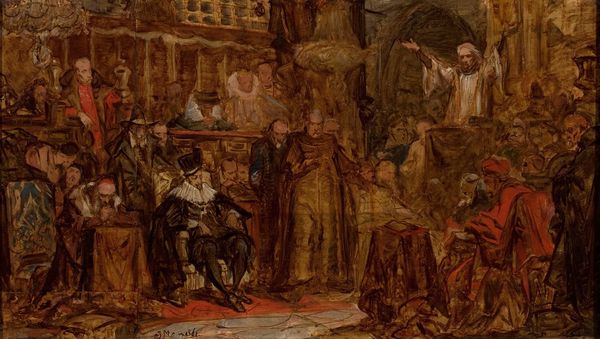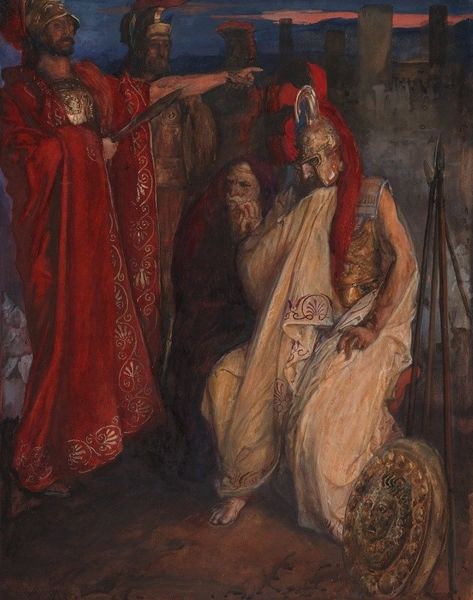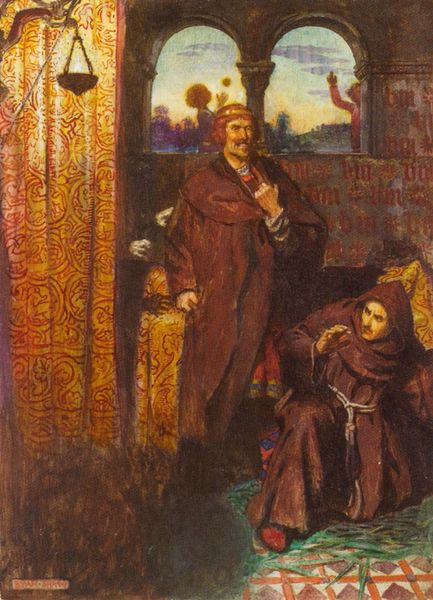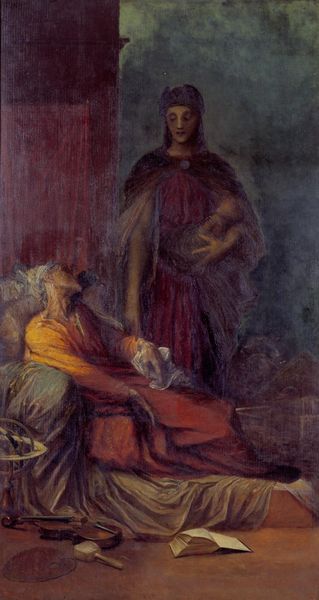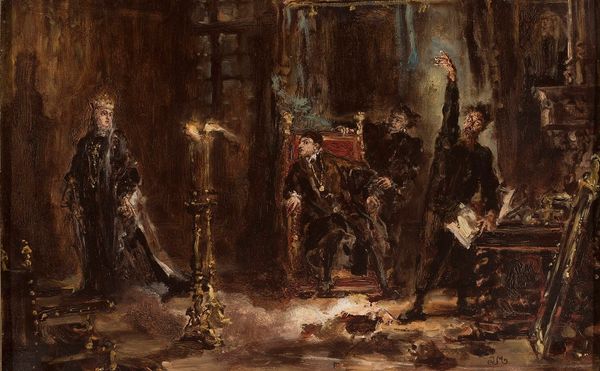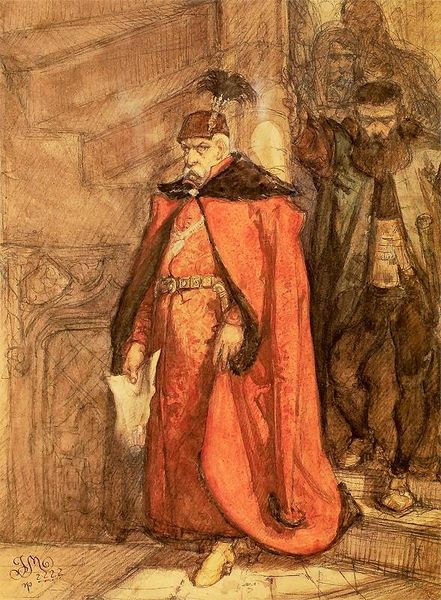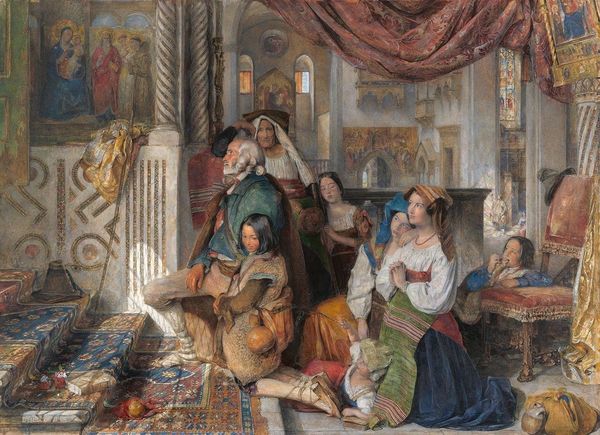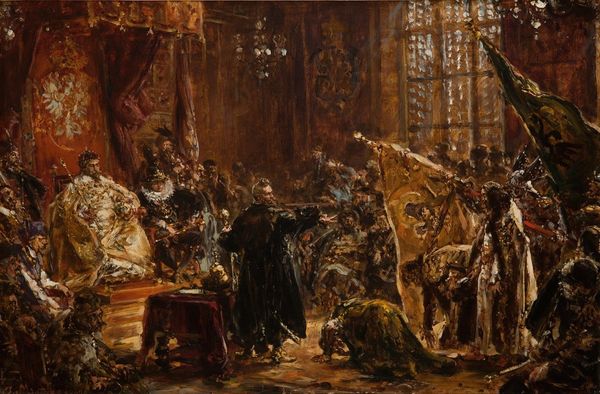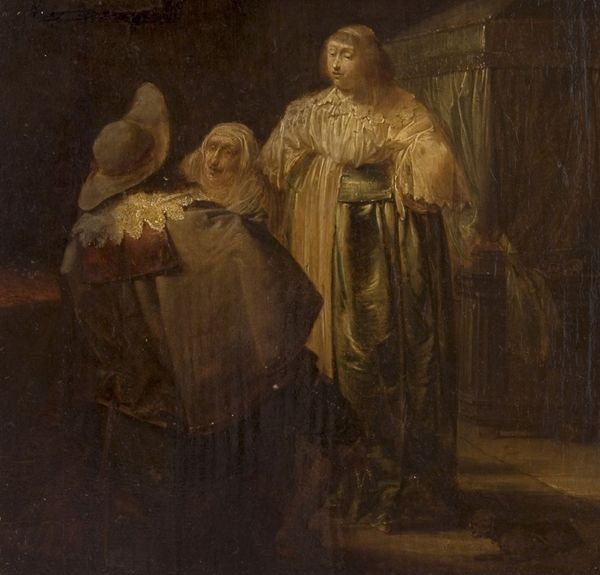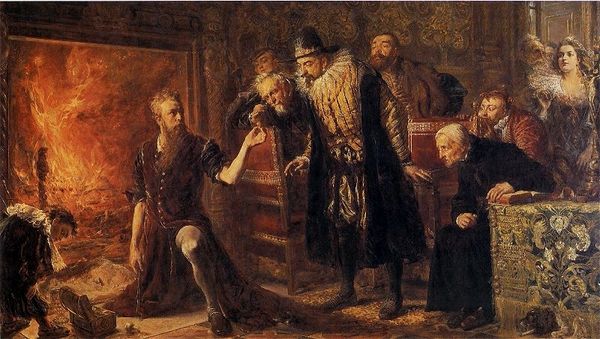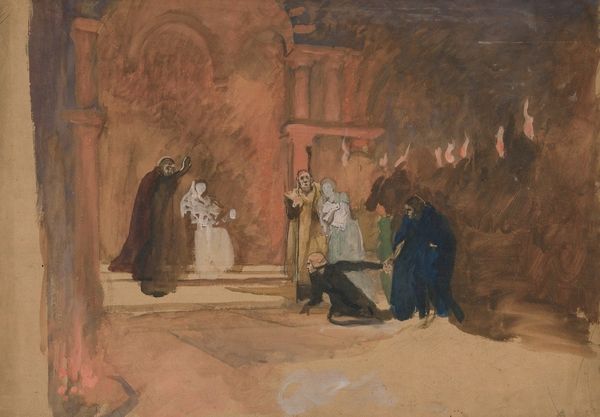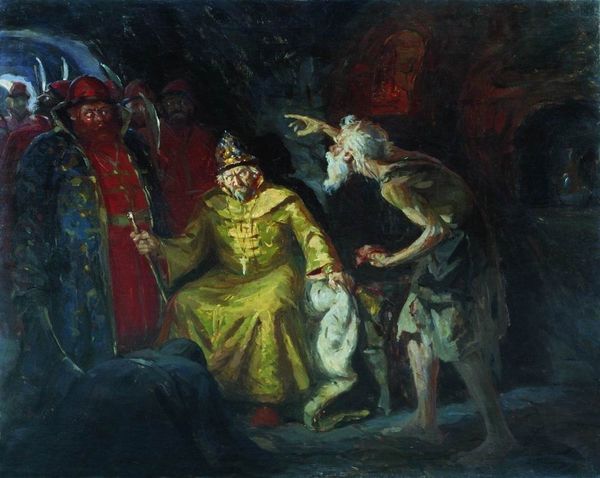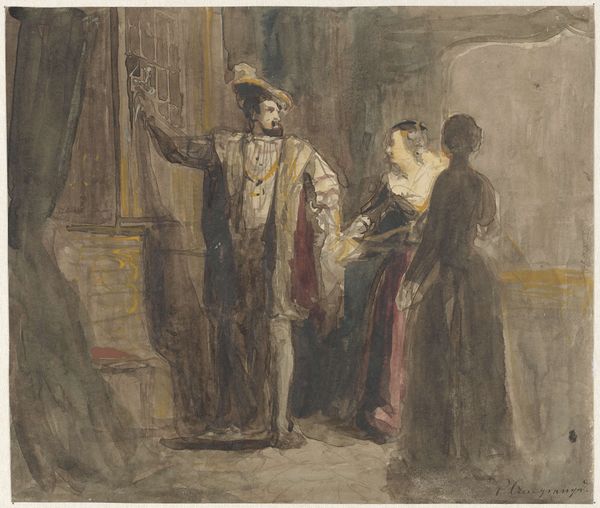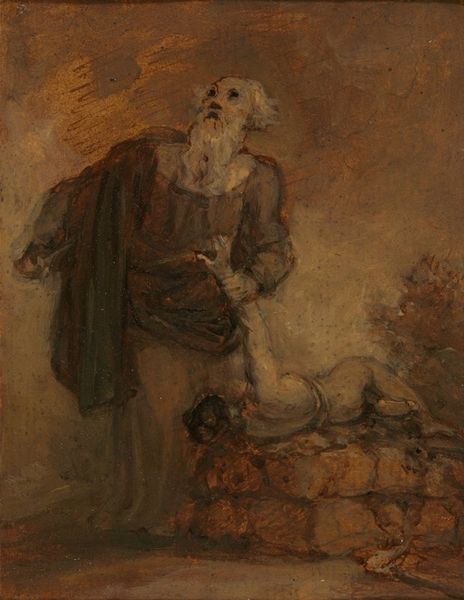
Copyright: Public Domain: Artvee
Curator: This is Jan Matejko’s 1867 oil-on-canvas sketch, titled “Alchemist Sendivogius and Sigismund III”. Editor: There’s a rather ominous mood cast here through the browns and reds. The subjects feel like they're caught between a flash of light and heavy shadow. It creates great visual drama. Curator: Absolutely. Matejko was clearly interested in exploring the social dynamics between power and knowledge. Sendivogius, the alchemist, stands tall while King Sigismund III leans in, suggesting dependence on Sendivogius’s knowledge and labour to produce gold and power. We have to ask, who really held the power in that room, the King, or the Alchemist? Editor: The composition is also working hard here, though. The receding space and the dramatic diagonals give the sense of a stage. Is Matejko perhaps playing on the artificiality of power through this visual metaphor? The alchemist's work implied promises and hidden potential that may or may not materialize for Sigismund. Curator: And the use of oil paints contributes to the atmospheric qualities, don't you think? Layer upon layer creates depth and allows the artist to rework and revise his vision. We’re able to witness a certain "unfinished" element in the sketch itself, where the materials still show their potential before refinement. You could even consider that as being a representation of alchemy itself: The moment between possibility and refinement, which might have fascinated Matejko. Editor: True. And considering how roughly rendered the secondary figures in the back are in comparison with the main subjects, I do wonder what the significance is. Are they mere spectators? Are they representative of the broader context surrounding the alchemist and king’s dealings? It opens a window into Matejko’s creative processes and artistic decision-making, as well. Curator: Seeing this preliminary painting alongside his grander, completed historical paintings definitely helps us to consider the process that informs our interpretations of history, as it's been crafted through a very material process and lens. Editor: It leaves us pondering about historical power dynamics through an engaging material representation, even in its raw, sketched quality. A fascinating work to unravel, and full of narrative energy.
Comments
No comments
Be the first to comment and join the conversation on the ultimate creative platform.
